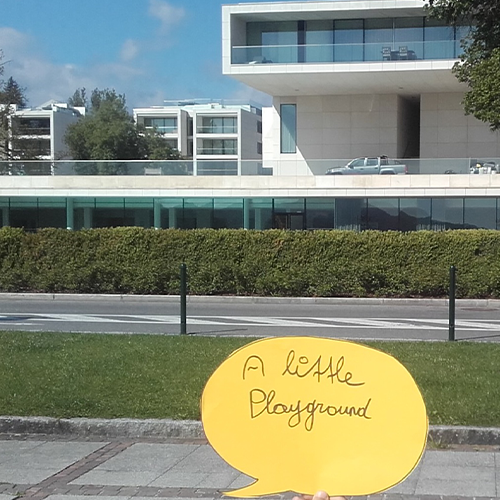Urban design – look closely
Each one of us lives in a house – some in a block of flats, some in community housing, some in single familiy homes. Most houses are in a street, so one could assume that everyone’s an expert when it comes to towns, streets, and houses. But that’s not true.
Quite a few people can name car brands or types but very few can name „house types“, or even compare the advantages or disadvantages of our own or other houses. For some reason we act like buildings are growing like trees in a jungle and that all this has little to do with us – like we don’t have to deal with it.
How come?
Why do we discuss the change of a national league soccer player more vigorously than a newly built street? Because we never learned to perceive our built environment. This is crazy because it is about us and our daily living space. It does make a difference whether we live in a friendly, beautiful city or not. And it should matter whether we feel good or not.
The city affects us all because we live in it. That’s why it is important to take part in considering and discussing.
For example to place the pedestrian crossing where it is needed or to build new save bike paths to get people out of their cars and onto their bicycles.
Everyone can do the first step: walk through town with your eyes open: How to I want to live? Where? With who? Which form of housing suits me? Now? Later?
Maybe you’ll ask yourselves what’s the point in asking those questions now – you’re still kids. Easy: You perceive more and you learn to understand that what we build today will also affect your future. We have to live with a building for a long time, no matter if it is wisely designed or not.
And it’s not only about looks but also functionality. Very prominent show-off buildings can be fascinating at first sight. But how long does the fascination last? If you regard your super-fashionable pants embarrassing the following year it’s one thing. If the same happens to a building it’s something completely different because you can’t just go and replace it. Even your grandchildren will have to live with it. That does not mean that we mustn’t build anything new or „modern“ (let’s call it contemporary). Every time has it’s own way to express their creativity.
When the Schönbrunn Castle in Vienna or the Eiffel Tower in Paris were built they were regarded as being „ugly“. But people learned to love them and now they are famous buildings. But of course there were also truly ugly buildings erected then as are today, and they won’t become beautiful no matter how much time goes by.
The more people learn to perceive their built evironment the more critical they will be when it comes to new ideas in urban design and planning.
And that’s what makes our urban life more pleasant. For everyone – also for you.
(Text übersetzt z.T. aus „Entdecke deine Stadt“, Anke M. Leitzgen, Thekla Ehling, Lisa Rienermann)
Kinder und Jugendliche erleben den Stadtraum anders als Erwachsene, sie haben eigene Interessen,
Vorstellungen und Bedürfnisse. Welche Vorstellungen haben Kinder und Jugendliche für die Nutzung und
Gestaltung ihrer Stadt? Was ist den jungen Leuten wichtig? Was könnten StadtplanerInnen von ihnen
lernen?
Bemühungen zu „jugendfreundlichen Städten“ zeigen allerorts, dass die Verbesserung der
Aufenthaltsqualität öffentlicher Räume insbesondere für Kinder und Jugendliche einen hohen Stellenwert
in der Stadtentwicklung hat. Dennoch sind Jugendbeteiligungsprozesse eher die Ausnahme als die
Regel, stellen sie doch eine besondere Herausforderung an die StadtplanungsexpertInnen dar. Die
Erwartungen der jungen Leute sind hoch, sie wollen ihre Ideen umgesetzt sehen. Es muss allerdings
auch vermittelt werden, dass nicht nur ihre Bedürfnisse allein zählen, sondern die aller anderen
StadtraumnutzerInnen genauso wichtig sind und es dadurch zu Konflikten kommen kann. Spielende
Kinder, alte Menschen, Geschäftsleute, Stadtverwaltung, Verkehrssicherheit und Katastrophenschutz –
alle Aspekte müssen berücksichtigt werden. Durch Partizipationsprozesse werden grundlegende
Haltungen wie Mitspracherecht, Gemeinsinn, Verantwortungsbewusstsein ebenso erfahren wie
Gestaltungswille, Kompromissbereitschaft und das Bewusstsein, dass man durch gesellschaftliches
Engagement Impulse geben und Veränderungen herbeiführen kann.
Die SchülerInnen lernen durch ein Stadtplanspiel und durch die aktive Auseinandersetzung mit ihren
Stadtraum besser kennen und wahrzunhemen. Auf festgelegten Routen entdecken sie ihre Stadt und
dokumentieren ihre Erfahrungen.
unterstützt von
KulturKontakt Austria
